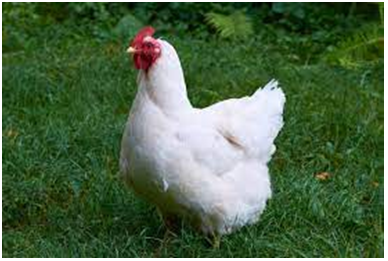
Over the course of decades, India’s poultry sector business has undergone a paradigm shift from a simple backyard occupation to a large commercial agri-based enterprise. High-yielding layer and broiler varieties, combined with a standardized package of nutrition, housing, management, and disease control practices, have helped India achieve spectacular growth rates in egg and broiler production. In poultry production, feed efficiency and high bird performance are critical goals. To attain these objectives, the quality of the feed, environmental circumstances, and as well as bird health must be taken into account. The phrase “gut health” has become a key indicator of poultry health, it is an important and complex area that combines diet, microbiology, immunology, and physiology. The delicate equilibrium between the host, the intestinal microbiota, the intestinal environment, and dietary components is essential for gut health. Any imbalance in the gut environment puts gut health at risk, which can have an influence on the poultry’s health and production performance.
The role of intestinal bacteria on broiler chicken performance has been investigated for decades. The distal intestine is home to the vast majority of gut bacteria, with concentrations approaching 1011 to 1012 cells/g, the highest ever observed for any microbial habitat. Nutritional digestion, absorption, metabolism, and general health and growth performance of poultry are all improved by gut bacteria and their metabolic products. Understanding the impact of feed additives on the intestinal microbiota of chicken, as well as their implications on general health and growth performance and interconnections will aid in the development of new dietary and management techniques, which will result in increased feed consumption and improved chicken growth performance.
Probiotics, prebiotics, organic acids, and exogenous enzymes have been shown to regulate gut flora and are frequently referred to as “antibiotic alternatives,” and they have proven to be effective in programmes aimed at reducing antibiotic use. However, it’s vital to remember that their usage is more preventative, the goal is to provide a product that provides a solution to the gut’s demands at critical moments in the chicken’s life as part of a planned strategy.
Role of Probiotics/ Prebiotics in Poultry Nutrition
Prebiotics: According to the US National Food Ingredient Association, Probiotic sometimes known as “direct fed microbial” is a source of live naturally occurring microorganisms, such as bacteria, fungus, and yeast and are live microbial feed additives that benefit the host animal by enhancing the microbial balance in its intestine. Some of the most often utilized probiotics in poultry are Bifidobacteriumspp., Bacillus subtilis, and Lactobacillus spp. A commercial probiotic mixture of yeasts and other microbes improves broiler growth performance without any dose effect from 0.2% to 0.6%.
Bacillus amyloliquefaciens enhances gut health and growth performance is a root-colonizing biocontrol bacteria used to fight plant root pathogens in agriculture, aquaculture, and hydroponics. Bacillus subtilis found in soil and the gastrointestinal tract of ruminants and humans has been shown to be effective against Salmonella infection, enhances laying performance by increased egg quality and production, and helps the immune system and gut health, also when feed supplemented with B. subtilis increases the body weights by 4.4% in broiler. Lactobacillus fermentum, Lactobacillus reuteri enhances growth performance, gut histomorphology, immune system, and gut health. Pediococcus acidilactici found in fermented vegetables, fermented dairy products, and meat improves laying performance and modulates the gut microbiota. Propionibacterium acidipropionici found in dairy products contributes to the better development of gut mucosa in poultry. In male broilers, the effects of Saccharomyces cerevisiae (SC) cell components on meat quality are enhanced meat tenderness. Bacillus licheniformis acts as an immune system enhancer and a hormone regulator has been shown to improve productivity and meat quality in broilers. Rhodobacter capsulatus improved poultry health and egg quality. Among the laying hens treated with C. butyricum, egg quality improved significantly due to the significant increase in crude protein content of albumen. Enterococcus faecium and Bifidobacterium thermophilus have improved the quality, size, and productivity of eggs in layers.
Probiotics might be utilized successfully as nutritional aids in poultry feeds in assisting proper development of gut structure and morphology, providing protection against luminal pathogens, produce antimicrobial compounds, modulate immune response and playing an active part in food digestion and utilization to boost animal performance and thus improving poultry meat quality. Unlike antibiotics, probiotics do not develop or spread microbial resistance, making them a more viable alternative to antibiotics.
Prebiotics: Prebiotics were characterized as non-digestible dietary components that foster one or more beneficial bacteria in the gastrointestinal tract, improve GIT health, and perhaps improve host health. Most non-digestible carbohydrates, such as fructooligosaccharides (FOS), galactooligosaccharides (GOS), mannan-oligosaccharides (MOS), soya-oligosaccharides (SOS), xylooligosaccharides (XOS), pyrodextrins, and similar carbohydrate polymers, are classified as prebiotics by this definition. Lactulose, mannitol, maltodextrin, raffinose, and sorbitol are also prebiotics and have proven health benefits. Usually, poultry are given prebiotics orally immediately after hatching, either by spraying them directly in their feed or by adding them directly to drinking water. Prebiotics not only modulates the intestinal microbiota but also improve systemic health, which shows in improved performance parameters such as egg production, bodyweight gain, feed conversion ratio, and mortality index. Prebiotics appear to have an immune-stimulatory impact on the host as well as the ability to function as adjuvants to augment vaccine-induced immune responses.
Feeding 0.25% FOS and 0.05% MOS to broilers has been reported to boost the diversity and population of Lactobacillus and while decreasing the population of E. coli and Clostridiumperfringens in the ileum (Kim et al., 2011). According to Shang et al., (2010) by increasing prebiotic concentrations, dietary supplementation with different levels of inulin reduced coliform bacteria counts in laying hens, while 2.0% of inulin significantly increased cecal Bifidobacterium counts. However, the effectiveness of prebiotics is dependent on a variety of factors, including the type of supplement, doses, the composition of the basal diet, animal characteristics, and environmental conditions, all of which have different effects on different poultry species, making it necessary to determine the conditions under which prebiotics are effective and to elucidate the mechanisms(s) of action involved in order to ensure their effective use. As a result, employing current prebiotics or creating novel prebiotics as a feed addition to replace AGP (Antibiotic growth promoter) and modify microbiota for enhanced chicken development and health might be a viable option.
Organic acids: Organic acids like lactate, acetate, propionate, butyrate, tannic, fumaric, and caprylic acids were formerly employed as a preservative to prevent degradation and extend the shelf life of perishable foods both before and after harvest because they regulate microbial contamination. Organic acid supplementation may disrupt cell membranes or macromolecules, as well as nutrition transport and energy metabolism, resulting in bacterial mortality. As a result, organic acids have been added to feed or water to improve GIT disease prevention, immunity, nutritional digestibility, intestinal health, and overall growth performance in broiler chickens.
Exogenous enzymes: Exogenous enzymes are used to compensate for the lack of endogenous enzymes and to counteract the anti-nutritional elements found in both traditional and alternative poultry diets. Because non-conventional feedstuffs are often high in fibres, exogenous enzymes in conjunction with non-conventional ingredients are employed to minimise feeding costs and efficiently utilize non-conventional feed components. Exogenous enzymes have a multifaceted effect owing to their participation in nutrient partitioning and in assisting the growth of certain bacteria by creating nutrients for them. These enzymes are being employed as part of an integrated approach to minimize the economic burden by restricting GIT infections, as well as lowering medicine expenses, enhancing animal performance, and lowering mortality by improving gut health.
In addition to these feed additives, feed material also has an impact on gut microbiota and insect proteins are such ingredients which are gaining importance in the poultry industry in recent years.
Effects of insect meal (Black Soldier Fly) on the gut microbiota of poultry
BSFL’s nutritional profile, notably its necessary amino acid profile and the ability of insects to synthesize anti-microorganism peptides, stimulates their usage in farm animal feed. Lauric acid (C12:0), which accounts for up to 64% of the total saturated fatty acid content of the BSFL, may provide some health advantages to broilers. Fortuoso et al. (2019) investigated the potential benefits of including 0.03% and 2.6% lauric acid in broiler diets, respectively, and found a significant reduction in Escherichia coli and total bacterial counts in excreta samples, improving intestinal health and broiler performance. BSFL micro compounds were shown to inhibit the development of a variety of hazardous pathogens, including gram-positive Staphylococcus aureus, methicillin-resistant S. aureus, and gram-negative Pseudomonas aeruginosa, in vitro (Park et al., 2014). When administered in vitro at least inhibitory concentration of 25 mg/mL, BSFL has been shown to exhibit antibacterial activity.
Broilers fed a balanced diet including up to 20% full-fat BSFL performed better than those fed a control diet, with the optimal inclusion level falling between 15% and 20%. The use of BSFL at such levels in broiler diets increased growth performance measures, possibly due to the immune system’s lowered energy demands. Bacteroides, Roseburia, and Helicobacter were identified as typical OTUs of the cecal microbiota of birds given a 15% level of insect meal inclusion. The Bacteroides genus contributes significantly to the gut health of poultry and inhibition of Clostridium perfringens sporulation and its fermentation products have positive effects on weight gain and growth performance. Roseburia is also a well-known butyrate-producing genus, making it another potentially useful bacteria. The discovery of physiological cecal community and intestinal mucus dynamics in all animals is a favourable outcome in terms of gut health maintenance and encourages the use of insects in poultry feeding.
Conclusion: It is obvious that healthy gut microbiota, immune system, and nutrition are all necessary for optimal intestine health and, as a result, animal productivity. Gut health, according to one definition, is “the gut’s capacity to conduct normal physiological processes and maintain homeostasis, hence maintaining its ability to survive infections and non-infectious stimuli.” There is a need to alter gut microbiota through tactics such as the use of feed additives either individually or in combination in diets to obtain optimum microbiota for better development and enhanced health of chicken and to establish cost-effective feeding programmes.
Microbiota can be a substantial stumbling block to development due to massive protein losses and high metabolic energy consumption. Following a thorough knowledge of the impact of these dietary supplements in total poultry performance, the next step would be to seek alternate sources of these supplements (from plants, animals, or other sources). Furthermore, investigations focusing on the synergistic and agonistic effects of these feed additives may aid in addressing the knowledge gap on their combined effects.

Dr. Neelam Chaudhary
Category Manager, Agri Commodities
Krimanshi Technologies Pvt. Ltd.
















